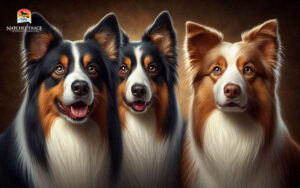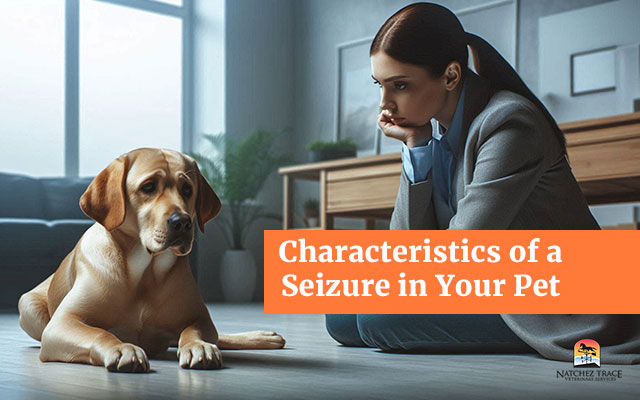Experiencing a seizure in pets can be one of the most alarming moments for any pet owner.
Sarah, a devoted cat lover, was shocked when her energetic cat, Whiskers, suddenly fell to the ground, his body twitching uncontrollably and his eyes blank and unfocused (symptoms of a seizure in cats). As Whiskers convulsed on the floor, Sarah’s heart raced, not knowing how to help or what was happening.
Many pet owners, like Sarah, find themselves unprepared and frightened when faced with a pet having a seizure.
Seizures in pets are caused by abnormal electrical activity in the brain and can manifest in various ways, from subtle twitches to intense convulsions. Understanding these characteristics is essential for recognizing and managing these episodes.
Learn from this short clip of Dr. Smith explaining the characteristics of seizures:
This guide will delve into the types of seizures, their symptoms, and practical steps to take when your pet experiences one, helping you feel more prepared and confident in providing the best care for your furry friend.
Types of Seizures in Pets
Pet seizures can vary widely in appearance and duration. Understanding the different types can help you recognize and describe them accurately to your veterinarian.
Generalized Seizures
 Generalized seizures affect both sides of the brain and are the most common type seen in pets.
Generalized seizures affect both sides of the brain and are the most common type seen in pets.
- Tonic-Clonic (Grand Mal): These are the classic seizures involving loss of consciousness, muscle rigidity (tonic phase), and rhythmic jerking movements (clonic phase). Pets may fall over, paddle their legs, and lose control of their bladder or bowels.
- Absence Seizures in Dogs (Petit Mal): These are brief and may go unnoticed. Pets might just stare blankly into space or blink rapidly for a few seconds.
Focal Seizures
Focal seizures originate in a specific part of the brain and may affect only one side or part of the body. Watch out for the following dog focal seizures symptoms:
- Simple Focal Seizures: These may involve twitching or jerking in one limb or part of the face,

without loss of consciousness.
- Complex Focal Seizures: These can cause bizarre behaviors, such as snapping at invisible flies, vocalizing, or circling. Pets may appear dazed or confused during these episodes.
Cluster Seizures
Cluster seizures in pets occur when a pet experiences multiple seizures within a 24-hour period. They can be particularly dangerous and require immediate veterinary attention.
Status Epilepticus
This is a prolonged seizure lasting more than 5 minutes or a series of seizures without full recovery in between. Status epilepticus is a medical emergency and can lead to severe complications or death if not treated promptly.
Common Symptoms and Behaviors
Recognizing the signs of seizure in pets can help you provide better care and prepare for veterinary consultations. Here are some common symptoms to watch for:
 Pre-Ictal Phase (Aura)
Pre-Ictal Phase (Aura)
Before a seizure begins, pets may exhibit unusual behaviors that signal an impending episode.
- Restlessness: Pacing, whining, or seeking comfort from their owners.
- Anxiety: Appearing nervous or clingy, sometimes hiding or becoming unusually affectionate.
- Unusual Behaviors: Licking lips, excessive salivation, or acting confused.
Ictal Phase (Seizure Activity)
This is the seizure itself, where you may notice:
- Muscle Twitching or Jerking: Involuntary movements ranging from subtle twitches to full-body convulsions.

- Loss of Consciousness: Pets may collapse and appear unconscious or unaware of their surroundings.
- Paddling or Thrashing: Pets may move their legs as if swimming or thrashing around uncontrollably.
- Vocalizations: Crying, barking, or other sounds as the seizure occurs.
- Drooling or Foaming at the Mouth: Excessive salivation is common during seizures.
- Incontinence: Loss of bladder or bowel control.
Post-Ictal Phase (Recovery)
After a seizure, pets often experience a recovery period, which can last from a few minutes to several hours.
- Disorientation: Pets may appear confused, unsteady, or shaky.
- Temporary Blindness or Deafness: Some pets might seem unable to see or hear for a short time.
- Lethargy: Many pets will be tired and may sleep deeply as they recover.
- Hunger or Thirst: Increased appetite or thirst can occur after a seizure.
 Factors Influencing Seizure Characteristics
Factors Influencing Seizure Characteristics
Several factors can influence the characteristics and frequency of seizures in pets:
Age and Breed
- Age: Seizures in pets can occur at any age, but certain conditions like epilepsy often manifest in young to middle-aged pets.
- Breed: Some breeds are more prone to specific types of seizures. For example, certain dog breeds like Border Collies and Australian Shepherds are more susceptible to epilepsy.
Underlying Health Conditions
- Metabolic Disorders: Conditions such as hypoglycemia or liver disease can contribute to seizure activity.
- Brain Diseases: Infections, inflammation, tumors, or traumatic injuries to the brain can lead to seizures.
Environmental Triggers
- Stress: Environmental changes, routine disruptions, or loud noises can trigger seizures in sensitive pets.
- Toxins: Exposure to harmful substances, such as certain foods, chemicals, or medications, can provoke seizures.
 What to Do If Your Pet Has a Seizure
What to Do If Your Pet Has a Seizure
Knowing how to respond during a seizure in pets can make a big difference in their safety and well-being:
- Stay Calm: Your calm demeanor helps keep your pet as calm as possible.
- Protect Your Pet: Move them away from objects that could cause injury and place them on a soft surface.
- Do Not Restrain: Avoid holding your pet down or putting anything in their mouth.
- Time the Seizure: Note the seizure duration to provide accurate information to your vet.
- Comfort and Monitor: After the seizure, comfort your pet and monitor their recovery closely. Seek immediate veterinary care if the seizure lasts more than 5 minutes or if multiple seizures occur in a short period.
In Conclusion
 Understanding the different characteristics of seizures in pets is crucial for recognizing and managing these episodes.
Understanding the different characteristics of seizures in pets is crucial for recognizing and managing these episodes.
Knowing the types and phases of seizures and identifying potential triggers empowers you to provide the best possible care for your pet.
Always consult your veterinarian for guidance tailored to your pet’s specific needs. Remember, with the right care and support, pets with seizures can still enjoy a high quality of life.
Considering opting for a natural remedy? Try Herbsmith Rx Gastrodia Settle Seizures Herbal Formula.







